
Golden beaches fringed with palm trees, tea plantations on misty mountaintops, non-stop, traffic-packed cities, elephants, leopards, bananas, tuk-tuks and rainforests: Sri Lanka is the South Asian paradise of imagination, and so much more. Its intensely spiritual, deeply religious, tropical, ancient, booming; its damaged by war and natural disaster but resilient, open to tourism but still traditional. It has been inhabited by native peoples since prehistoric times, but over the years its abundant natural resources and strategic position in the Indian Ocean has made it attractive to waves of colonisers. The first Europeans, from Portugal, set foot on the islands shores in 1505, but for centuries before this it was frequented by merchants, mainly from Arabia, who came for exquisite spices and precious stones. A period of Dutch control followed from 1658 to 1796, whereupon the British arrived and ruled what they called Ceylon until its independence in 1948. But Sri Lanka today shows influences from every era, from every group who lived in the country and fell for its bewitching charms.
Now, in the twenty-first century, there is still a Muslim community who can claim lineage back to the Arab traders; many people in coastal areas in the south-west practise Catholicism and have Portuguese surnames; and the Dutch and British left fine colonial buildings. And the British introduced cricket, which was taken up with gusto by Sri Lankans and has become the national sport. Today, Sri Lanka is dominated by two distinct groups: the majority Sinhalese, who are concentrated in the south, central and west of the island, and the Tamils, mostly found in the north and east. There are differences: separate languages (Sinhala has roots in north-east India, and Tamil can be traced back to southern India), unique traditions and cultures, and religion, whereby Sinhalese practise Buddhism and Tamils are mainly Hindus. The island also has smaller Christian and Muslim populations. This mosaic of diversity has led to Sinhalese and Tamil styles of cooking developing their own identities.
This, coupled with the tropical vegetables, vibrant spices and bounteous seafood, has given Sri Lankan cuisine a singular style, subtly different from that of its enormous neighbour to the north, India. But this cultural split also led to the horrific civil war of 1983 to 2009, which pitted the government forces against Tamil Tiger insurgents, and also set Sinhalese against Tamil, neighbour against neighbour, Sri Lankan against Sri Lankan. It cast a dark shadow over the island and is unfortunately still sometimes the first thing the world associates with the country. But since the end of the war in 2009, reparation efforts have been made and visitors are able to appreciate what really is a peaceful, united and beautiful island. Development continues apace, with new railways, infrastructure and hotels, but it remains a unique country, and one, most importantly, with incredible food.

Sri Lanka is a place where two separate peoples and cultures exist side-by-side, and as such Sinhalese and Tamil cooking each have their own characteristics, with both well represented in this book.
They show influences of the southern and eastern states of India, but also have idiosyncratic traces of the foods of the countries that have colonised the island. The south is a green and lush land where cardamom, cloves and black pepper grow plentifully. Ceylon cinnamon is acknowledged to be the best in the world. The Sinhalese, who mainly inhabit this region, use these spices more than Tamils. They are mostly a Buddhist people, so most (but not all) eat very little meat, meaning Sri Lanka (and this book!) is wonderful for vegetarians. Many Sinhalese follow the principles of Ayurveda: food is medicine, medicine is food, and believe plants and spices have powerful healing properties.
The north and east of the island has a shorter rainy season, more suited to crops of chilli, which is incorporated into the more fiery recipes of the Tamils, as youll notice. Tamils say there are six tastes, arusuvai: sweet, sour, bitter, spicy, salty and astringent, and that every meal should be a harmonious balance of all. Tamils and Sinhalese are more likely to eat meat chicken, usually, or goat. The cow is a sacred animal in Hinduism and so beef isnt seen often, although some cattle are kept by the Christian and Muslim communities. But there is plenty of common ground: the humble coconut, in the form of its flesh, milk and oil, is used universally, as is rice, the staple carbohydrate, and lentils. Curry leaves are a vital part of many Sinhalese and Tamil dishes too.
Vegetables grow so well in the warm, rainy climate that no day passes without a meal using juicy tomatoes, fragrant pineapples and jackfruit, or aubergines, beans and gourds. And the warm waters of the Indian Ocean provides the island with copious fish and shellfish, almost all wild tuna, large trevally (jack fish), swordfish, kingfish, and prawns, squid and shrimp. Sri Lankans tend to tuck into hearty breakfasts of string hoppers with curry and sambol relish, generous lunches and smaller, uncomplicated dinners in the evening. Short eats are small takeaway snacks taken at any time of the day, and sold by shouting vendors in railway carriages and lively beachfronts; they include fish patties, crunchy lentil vadai and mince rolls. The classic Sri Lankan meal is rice and curry, a simple-sounding name that belies the thought and detail that goes into its preparation. It consists of a balance of several spiced, colourful curries, perhaps a dal, and some bread or rice, as well as accompaniments of sambol relish or pickle.
Its a generous spread, and you could try it for a dinner party or special occasion, but for everyday cooking youll find that two or even one of the dishes in this book make a memorable meal on their own.


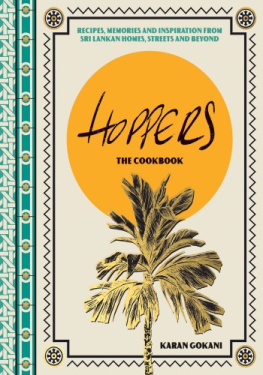
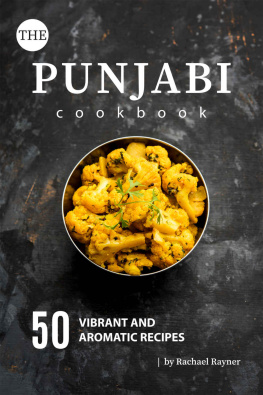
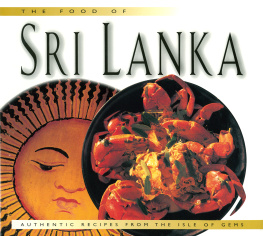

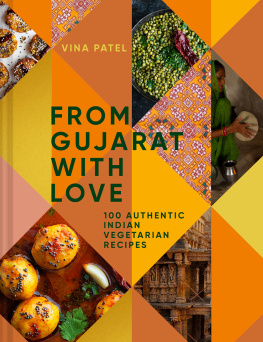
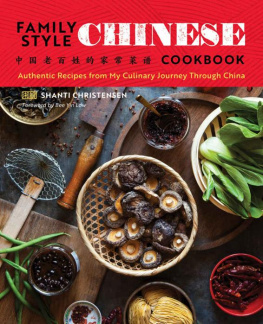
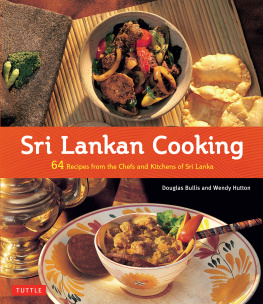
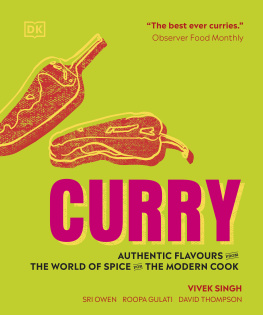
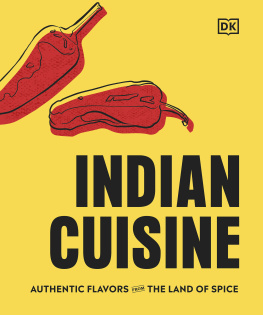
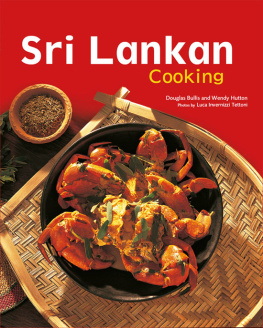
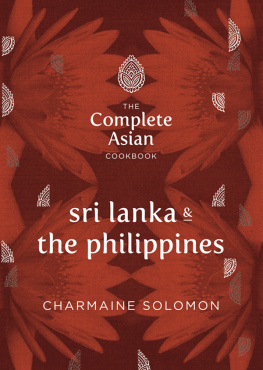
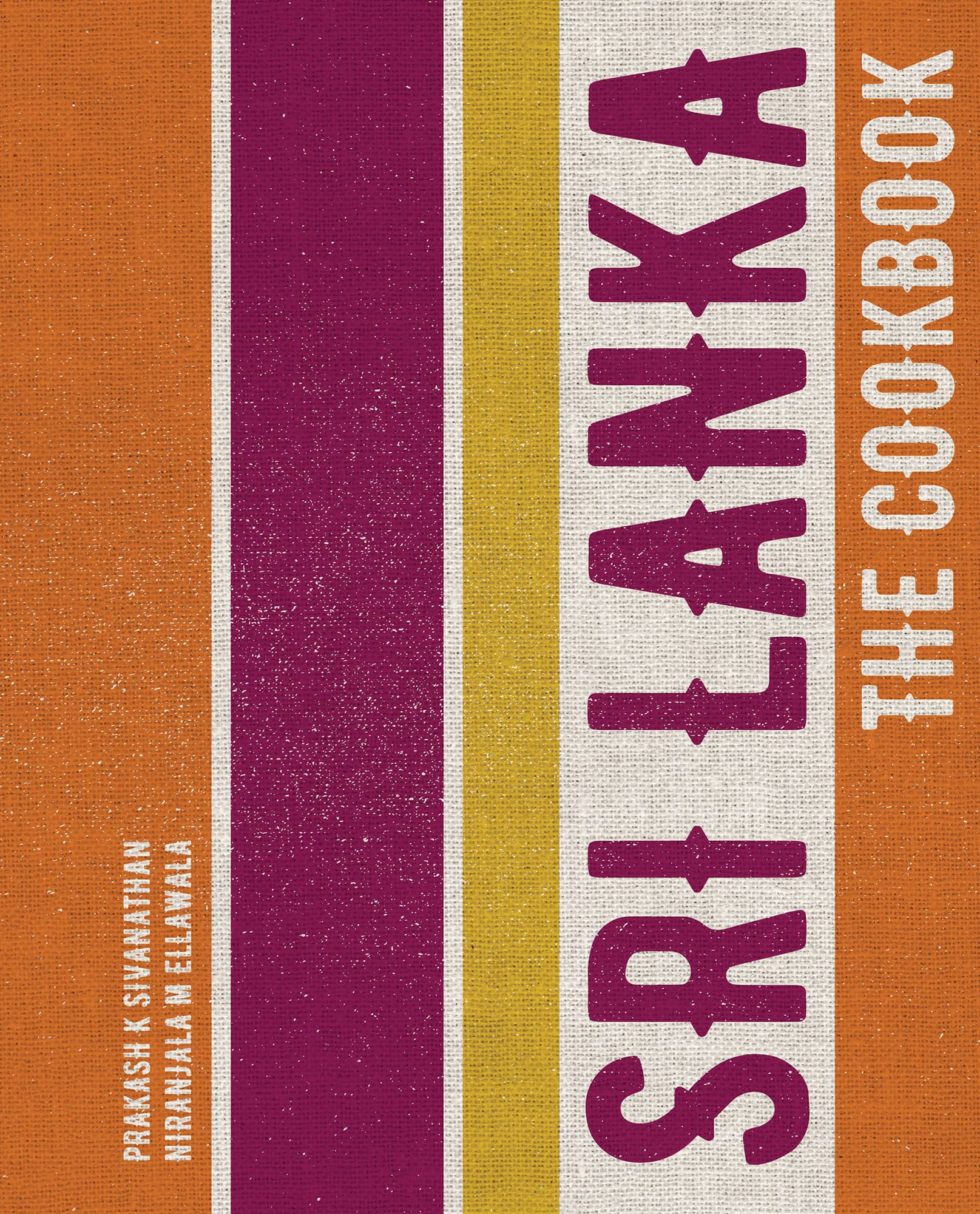



 Tamil
Tamil  Sinhalese
Sinhalese  Vegetarian
Vegetarian  Fish
Fish 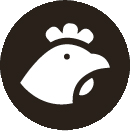 Meat
Meat 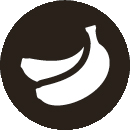 Desserts
Desserts 

